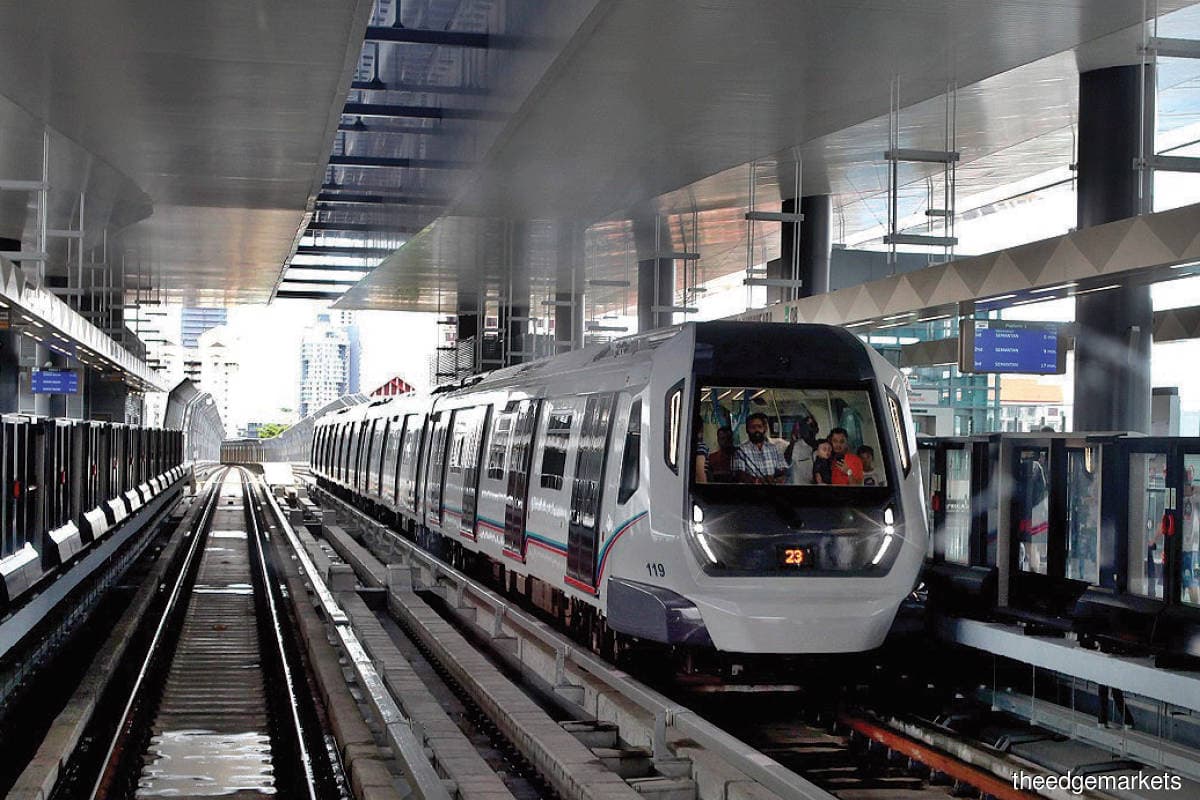
This article first appeared in The Edge Malaysia Weekly on October 4, 2021 - October 10, 2021
BIG construction companies are forming consortiums and joint ventures (JVs) to prepare for the eventual construction tenders for the Klang Valley Mass Rapid Transit Line 3 (MRT3), say sources. This shows that there are expectations on the government to announce the tender on the project soon.
Construction giants with balance sheet strength the likes of YTL Corp Bhd, Sunway Construction Group Bhd and IJM Corp Bhd are said to be forming consortiums and JVs to prepare for the tender. YTL is said to be partnering with Siemens and a bumiputera company, while SunCon and IJM are in a JV together.
This is, of course, in addition to MMC Corp Bhd and Gamuda Bhd coming together again to bid for the project. MMC and Gamuda were the project delivery partners for the Sungai Buloh-Kajang Line, or MRT1, and the turnkey contractor for the Sungai Buloh-Serdang-Putrajaya Line (SSP, or MRT2).
“Everybody is gunning for it. The big guns are preparing for it,” says a source with insight on the construction industry.
MRT3 will be linking both the MRT1 and MRT2 lines as it will form a loop around Kuala Lumpur city. Preliminarily, the line will have 30 stations, with 10 stations being interchange stations with other MRT, light rail transit and KTM Komuter lines.
During a briefing in April, MRT Corp CEO Mohd Zarif Mohd Hashim said that the entire alignment will be about 50km, of which 40% will be underground. However, the project will take a decade to be completed, compared with the initial plan to complete it within seven years.
Also in April, Transport Minister Datuk Seri Wee Ka Siong said that the then Cabinet had given the go-ahead for MRT3, which was targeted to start in the second half of this year. However, tenders have not yet been called for the project.
Talk of construction companies forming consortiums and JVs signals that the government might be starting to work on MRT3. However, MRT Corp was supposed to update the feasibility studies and alignments for the line, which it has not.
In the April briefing, Zarif said the project could see private financing being roped in, rather than purely from the government’s development expenditure budget. Notably, the MRT3 project was not mentioned by Prime Minister Datuk Seri Ismail Sabri Yaakob in his 12th Malaysia Plan (12MP) speech.
Therefore, there is still some time and steps to go through before the tenders and contracts are awarded for the MRT3 project. This, however, does not mean that construction companies should not prepare themselves in advance to bid for the project.
In the 12MP, the government plans to allocate RM400 billion — the largest in Malaysia’s history — over the next five years to fund infrastructure projects. Half of the allocation will go to the least-developed states in northern Peninsular Malaysia as well as Sabah and Sarawak.
This means that an allocation of RM200 billion will be shared across the other states as well as the Federal Territories. It is not clear whether the budget for MRT3 will be funded through the development expenditure, or through off-the-book funding by the government.
What is clear is the government will not fund MRT3 in its entirety, hence the need for private funding. However, it is not clear how the private sector would play a role in funding MRT3.
The government is working on a new model on public-private partnerships (PPP), which is expected to be revealed in the middle of next year. The model is believed to be for the MRT3 funding.
The MRT3 project is estimated to cost between RM27 billion and RM32 billion, according to CGS-CIMB Research. In a report dated April 5, its analyst Sharizan Rosely says funding uncertainties and politics will be the next hurdle for MRT3.
But this was before the change of prime minister and the memorandum of understanding between the government and opposition blocs. With the political hurdles seemingly averted, financing is the last challenge for MRT3.
“Cabinet approval lifts the overhang on the MRT3 project but the speed of implementation, in our view, hinges on the finalisation of funding structure beyond the RM15 billion direct allocation for new public transport projects under Budget 2021.
“Whether the new MRT3 comes with a private finance initiative (PFI) given the government’s limited room for a direct infra funding model remains to be seen,” Sharizan had stated then, adding that CGS-CIMB is net positive on the MRT3 news.
Save by subscribing to us for your print and/or digital copy.
P/S: The Edge is also available on Apple's AppStore and Androids' Google Play.